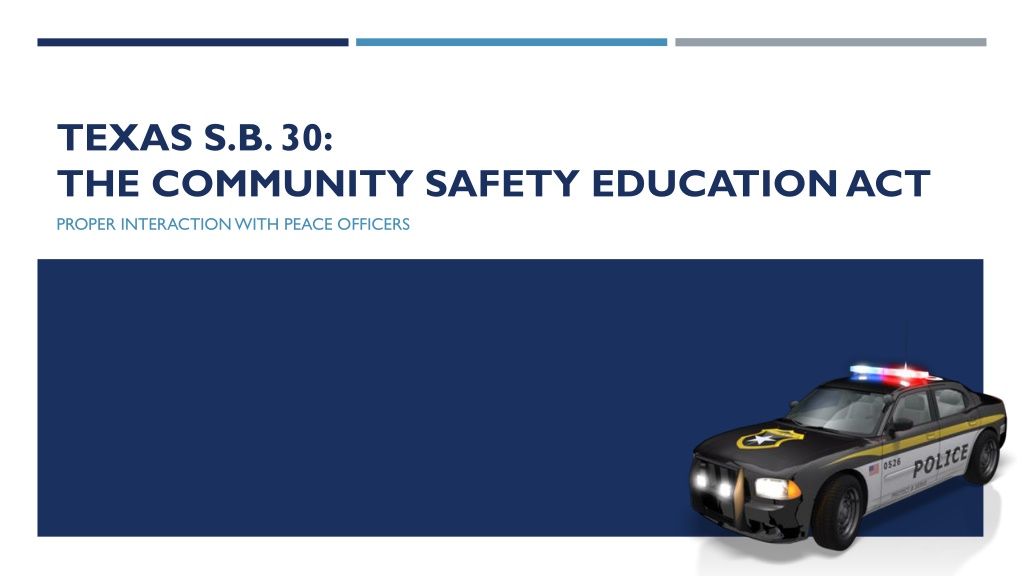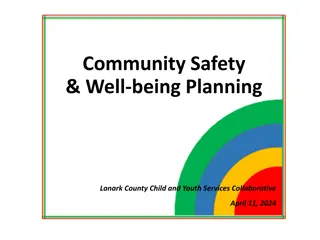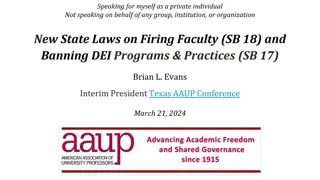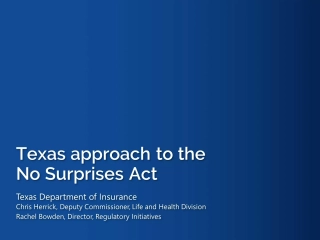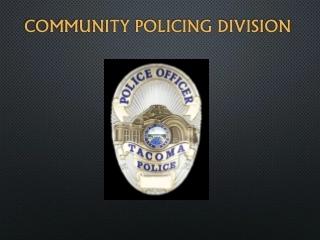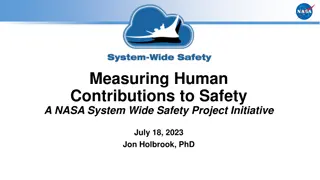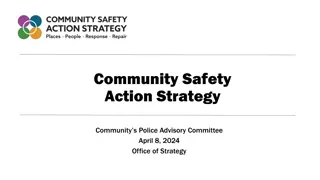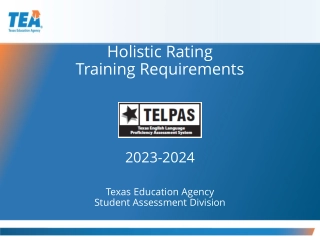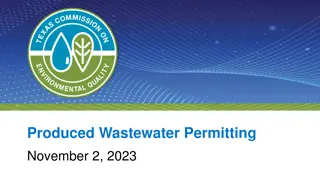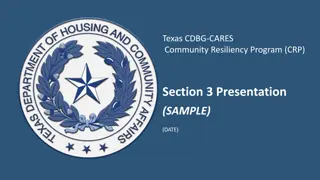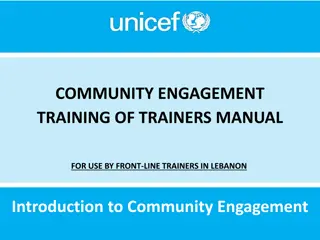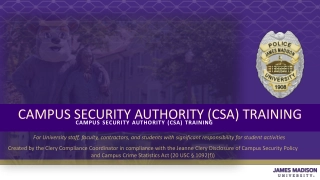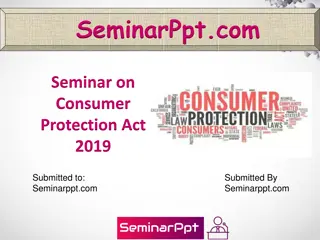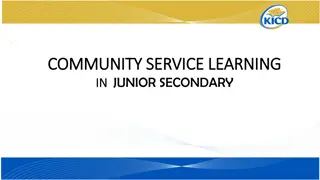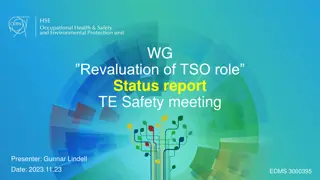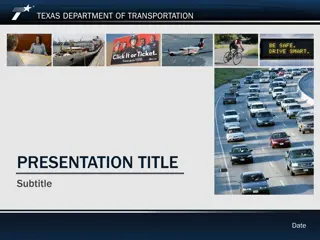TEXAS S.B. 30: THE COMMUNITY SAFETY EDUCATION ACT.
The Community Safety Education Act in Texas mandates high school students to learn how to interact with law enforcement officers for the safety of both citizens and officers. It covers the rights, responsibilities, and common scenarios like traffic stops. Citizens are encouraged to be aware of their actions to ensure a safe interaction with peace officers.
Download Presentation
Please find below an Image/Link to download the presentation.
The content on the website is provided AS IS for your information and personal use only. It may not be sold, licensed, or shared on other websites without obtaining consent from the author. Download presentation by click this link. If you encounter any issues during the download, it is possible that the publisher has removed the file from their server.
Presentation Transcript
TEXAS S.B. 30: THE COMMUNITY SAFETY EDUCATION ACT PROPER INTERACTION WITH PEACE OFFICERS
PURPOSE The term "peace officer" is used to describe anyone who has statutory law enforcement powers. Citizens may interact with peace officers in a variety of situations, some of them stressful. In 2017, the Texas Legislature passed the Community Safety Education Act requiring high school students to receive instruction on how to properly interact with law enforcement officers. The purpose of the instruction is for the safety of citizens and officers alike.
TWO TRIVIA QUESTIONS What is the most common reason for contact with the police? A TRAFFIC STOP What do all of the following people have in common (besides being killers)? Timothy McVeigh (the Oklahoma City bomber) David Son of Sam Berkowitz (a serial killer) A ROUTINE TRAFFIC STOP Mohammed Atta (ringleader of the 9/11 attacks) Hint: Preceding their arrests, they all came to the attention of law enforcement through
RIGHTS AND RESPONSIBILITIES In every officer & citizen interaction, you have certain rights and responsibilities. For example, you may have the right to record the interaction with your cell phone But you also have a responsibility to consider the safety of everyone involved. If you pull your cell phone out of your pocket and point it at an officer, they may NOT KNOW it s a cell phone! https://www.piqsels.com/en/public-domain-photo-jcfma https://www.needpix.com/photo/795174/camera-forest-man-outdoors-person-photographer-trees-free-pictures-free-photos
THE ICEBERG ANALOGY A law enforcement officer s actions during a traffic stop are like an iceberg. The driver only sees what is happening on the surface, but there is a lot going on in the officer s mind below the surface. Officer and civilian safety are the #1 priority.
VIDEO https://youtu.be/_IS6euS8QSo https://youtu.be/Fi60a-W0Qsc (Both links will show the same video. Two links provided in case one does not work.) As you watch the video, please complete the handout.
QUESTIONS Read the 20 Tips for Interacting with Law Enforcement QUESTIONS? What questions do you have?
ASSESSMENT Thank you for your participation! You will now take a follow-up POST-TEST to assess your understanding. If you have remaining questions, please ask!
